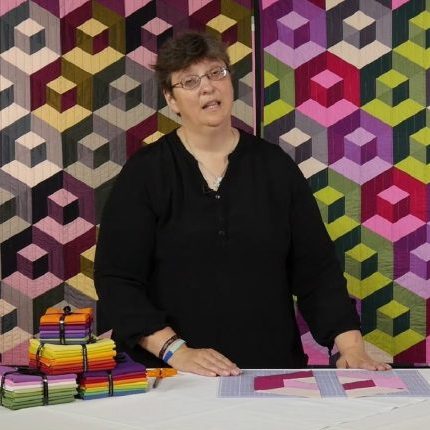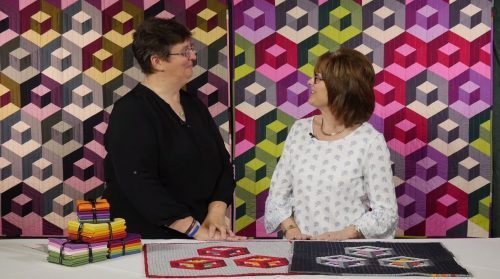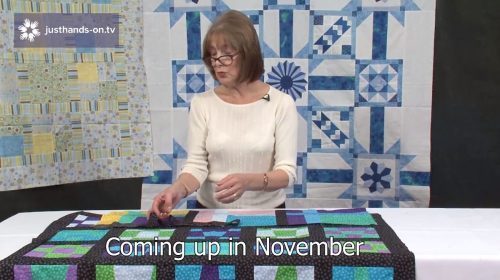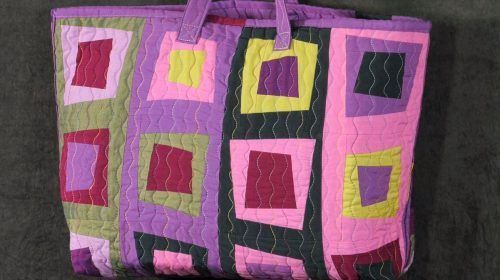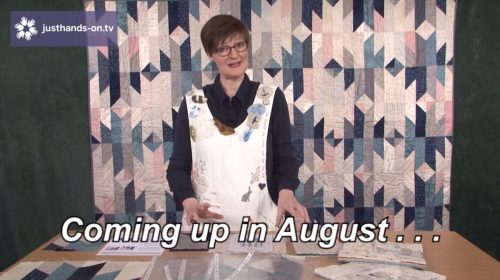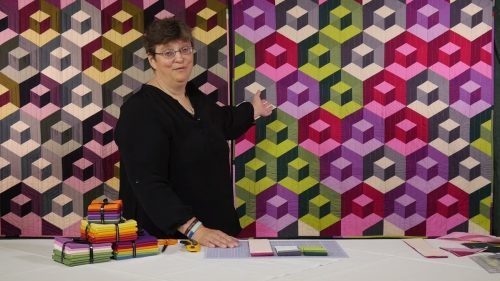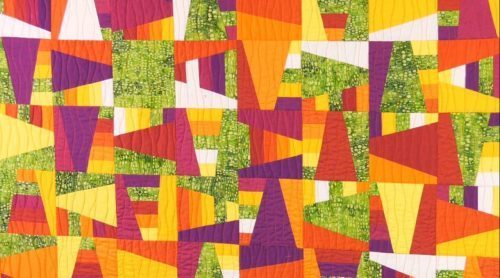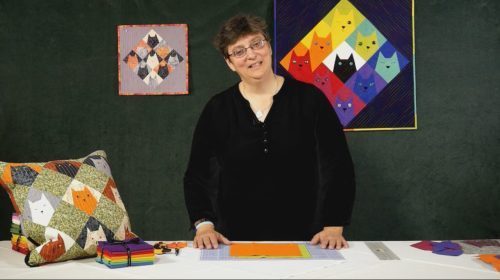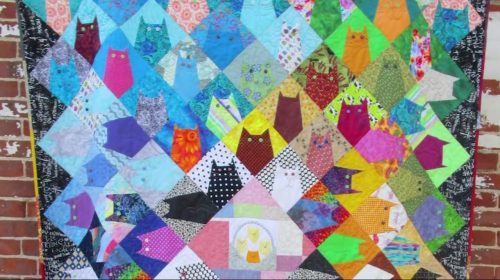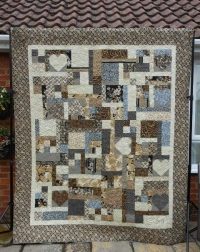About Helen
Helen can’t remember a time when she wasn’t making something. As a young child her greatest joy was the ‘useful box’ which lived in the cupboard under the stairs and was the repository for empty egg boxes, cereal packets and yogurt pots, all fantastic stuff to feed a creative mind.
When Helen was seven her Grandmother taught her to sew and opened her mind to a whole new avenue of creative expression. Helen designed and made her first full size cross-stitch sampler before she was nine, and made various garments for dolls and bears and eventually herself, creating patterns by the simple method of lying on the floor and drawing round herself, much to the amusement of her Mother & Grandmother – both accomplished dressmakers.
Helen worked in graphics, and then advertising, for ten years, until she and her partner had the opportunity to quit the London rat-race and move to Yorkshire to run the family’s marina business. During this time, Helen taught herself patchwork, quilting, beading, origami, marquetry, doll making and canvas work. She discovered that, not only does she love crafting and the challenge of learning something new, she also had a hitherto undiscovered competitive streak deep inside which prompted her to hone these new skills to the point where she regularly won awards in the handicrafts section of shows.
Fifteen years later, Helen decided to combine her experience of running a business with her enduring passion for crafting to start LITTLE PATCH POCKETS. Helen creates patchwork designs and writes patterns so you can make your own unique, lovely things. She also offers kits, classes and workshops where she teaches her designs.
Helen loves using three dimensional illusions in her work. According to Helen, “I love to create an illusion of three dimensions and many of my designs are based on this concept. I do occasionally use curved lines, but since my mind seems to work in straight lines I find lots of inspiration in architecture, engineering and even mathematical concepts. I like accurate piecing and often create my own foundation paper pieced blocks in order to achieve the precision I enjoy.”
Helen is an avid follower of the Modern Quilt Movement as well as a great believer that quilts are for using: “for your three-year-old to drag down the garden, for the dog to sleep on and to go in the washing machine.”
Signature Technique
Modern Quilting
Helen’s Top Tips
- Colour choice is key to 3D work. Always select three shades of the same colour, or light, medium and dark tones of the same colour.
- Auditioning fabrics is one of the most useful skills any patchwork artist can develop. A quilt needs contrast of tone, however subtle, to accentuate the design.
- Never use a fabric with a low thread count or a loose weave, however good the colour. Thinner fabrics do not handle well, will fray quickly and will not wear well in the finished quilt. It is worth investing in good fabrics.
- Many of the fabrics at the cheaper end of the market cover up this deficiency with excessive amounts of surface ink and stiffening treatments – the secret is to turn to the back and check.
- Always look for a fabric that is likely to shrink only minimally. Some shrinkage is to be expected, especially when combining fabrics from different manufacturers. Look on this as part of the charm of a washed quilt. However, cheap fabric with an open, loose weave will shrink hugely when washed, ruining your work.
Videos
Books and Patterns
Posts
Turning 20 Again with Hearts
Look what Jasmine made at our Dunford House 2014 weekend getaway (and finished with her wonderful long arm quilting at home) look forward to you joining us again in 2015.
What size do you need to cut with the rotary cutter?
The rotary cutter means that you dont have to use templates and here are some simple rules that you can apply throughout your patchwork: On the Flying geese fast no-waste method you just need to add 1 1/4" to the finished size you need for the larger square so for 4" you need 5 1/4" and then 7/8 to the size of the smaller square - so again you are right at 2 7/8 and if you want to enjoy the video on this click here: The other magic numbers for rotary cutting are as follows:
For a plain square you add 1/2" so 4" finished becomes 4 1/2" For a half-square triangle we now add 1" - so cut 5", - and once sewn trim back to be an accurate 4 1/2" before sewing
and for quarter-square triangles we add 1 1/4" (as per the flying geese) and pay attention to the seam allowance we sew!
Do you love Butterflies?
I do and certainly can't resist fabric that has them on; not so keen on moths however. Still follow this link and you will see them in a whole new light: North Carolina-based artist Yumi Okita creates beautiful textile sculptures of moths, butterflies, and other insects with various textiles and embroidery techniques. The pieces are quite large, measuring nearly a foot wide and contain other flourishes including painting, feathers, and artificial fur.

